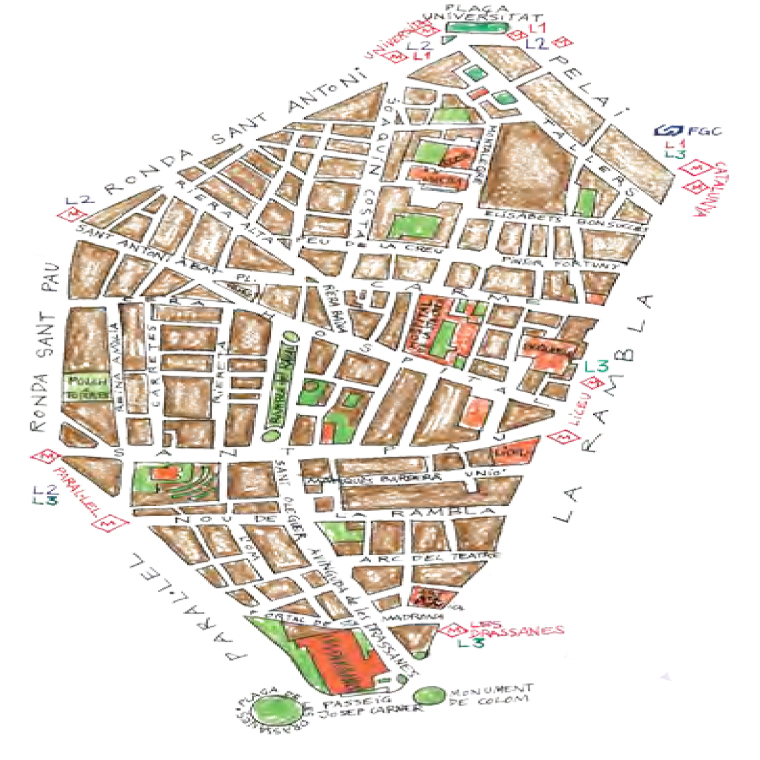Action Plans in Spain

The increasing diversity of our neighborhoods is promoting a highly fragmented constellation of educational silos, for which the centers in Raval and its surrounding areas represent a paradigmatic example. The quarters of Raval and Poble Sec are located in the center of Barcelona and, while they belong to two different districts (the first level for educational policy), their social structure (including having the highest proportions of population born abroad in town - 60,9% and 30%, respectively) is closer among them than with the rest of quarters in their corresponding districts, which subsequently often fail to provide adequate answers for them.
The sources of inequality are quite diverse, and many youths at risk lie at the intersection of multiple types of disadvantages, each of them often tackled separately. Stereotypes and prejudices are often present, as a reaction to the complexity of a context with such richness at all levels, further promoted by the high mobility of people involved in education (with professionals mostly coming from the rest of the town to work there, bringing their previous views about the quarters with them). This complexity is now exacerbated by the impact of the digital divides in education. We expanded the goal of the project, on the one hand, to also involve professionals working in non-formal education, to better align the full range of actors and processes that influence the success or failure of educational inclusive education. On the other hand, to include digital aspects not originally foreseen in the proposal (submitted before the COVID-19 outbreak).
A better understanding of two sources of educational inequalities stemming from social factors (cultural complexity and digital divide) has been the core of the action plans in Spain, building on the already sound expertise that the involved communities had with handling cultural diversity. The limitations handling the digital transformation by professionals in education (including their own stereotypes and prejudices, since many educational professionals suffer from a very high digital gap) are transferred to the families, adding stereotypes associated with technologies with the stereotypes associated with social origin. A core tenet of all three action plans has been the effort to incorporate this digital dimension into their inclusive practices, with different actions depending on the scope of each of the communities involved (primary, secondary and community-education). It has contributed to the evolution of existing inclusive education models to consider technological progress in them (in terms of access, curriculum, and pedagogy). In addition, due to the high mobility of teachers and students (and also of staff working on social services and the network of entities providing support to neighbors in difficulties) and the associated difficulty to build and maintain trust relationships (teacher - student, school - families, school - environment), as well as to consolidate previous learnings (knowledge of the context of the school, learning about specific issues linked with migration or cultural aspects of specific immigrant communities and their integration, etc.), a focus has been put on strengthening welcoming mechanisms that may deconstruct some of these prejudices and based on evidence-based information and a deeper knowledge of the context, is expected to improve the situation for the benefit of a more inclusive education.
The project has achieved to progress in i) enriching the understanding of the impact of digital divides for inclusive education in teachers, in order to build mid-term plans to address them and ii) in tackling specific aspects during the course of the project, such as solving problems experienced by families in accessing and using digital tools, structuring internal and community resources to better align support within and outside schools (including the digital dimension) and setting up structures to better welcome and integrate newcomers in the educational communities in the districts.
